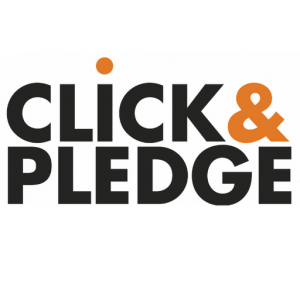 [et_pb_section bb_built=”1″ admin_label=”section”][et_pb_row admin_label=”row” background_position=”top_left” background_repeat=”repeat” background_size=”initial”][et_pb_column type=”4_4″][et_pb_text background_layout=”light” text_orientation=”left” border_style=”solid” background_position=”top_left” background_repeat=”repeat” background_size=”initial” _builder_version=”3.0.62″]
[et_pb_section bb_built=”1″ admin_label=”section”][et_pb_row admin_label=”row” background_position=”top_left” background_repeat=”repeat” background_size=”initial”][et_pb_column type=”4_4″][et_pb_text background_layout=”light” text_orientation=”left” border_style=”solid” background_position=”top_left” background_repeat=”repeat” background_size=”initial” _builder_version=”3.0.62″]
Throw a Party! Events Management Apps that Integrate with Salesforce
Nearly every nonprofit is dependent on fundraising from donors, whether it be private individuals or corporations. For that reason, many nonprofits host galas or other fundraising events. These events give an organization the opportunity to tell its story, make a splash, honor current supporters, and hopefully bring new donors into the fold.
You want to make sure information about these people and organizations is saved in an accessible way, allowing you to easily report and strategize for next year. If you are a Salesforce user, you will want to store this data there. Salesforce users have several choices when it comes to Events applications.
What to Look For in an Events App
People generally incorporate an Events app because they are holding a paid event. They need to meet two functions: Payment processing for ticket purchases ensuring secure deposits to your bank account, and simple linkage or sign-up forms that you can put on your website. These functions can be performed by implementing several tools (PayPal, Stripe, etc.), or you can choose an Events app that offers additional functionality:
Time-sensitive purchases: Donations are always welcome, but gala tickets are typically only available during a specific time frame. An Events app allows you to set the time frame for purchases and disables ticketing when the event is over.
Limiting numbers: Imagine that you have reserved a ballroom with a fire code that permits 500 people maximum. But the day before the event you realize that 600 people have signed up. Who do you tell to stay home? Just as the timeframe for an event is limited, so is the physical space that must accommodate it. An Events app must have a count-down function to shut off purchases when the last ticket is sold.
Custom questions: Different events are, well, different. You may be running a fancy dinner or you may be running, literally, in a marathon. You may need to ask your donors anything from whether they prefer the chicken, fish, or vegetarian option, to what their t-shirt size is. Events apps need to be customizable so that you can collect the information you need for your specific event.
Purchaser vs. Attendees: An Events app has to make a clear distinction between the purchaser and the attendees. There are multiple possible scenarios: a) the purchaser may be buying a ticket for herself; b) she may be buying on behalf of a group which she is part of; or c) she may be buying on behalf of a group, but not attending herself.
Depending on the scenario, the information that is appropriate for each party is different. Above all, the purchaser should receive a receipt with financial information, whereas the attendees should only receive confirmation that they are registered with date and time information. Finally, whereas the identity of the purchaser is always known based on credit card information, the identify of attendees can be anonymous. An example is when a company buys a table, and only on the night of the event do you know who will be filling the seats.
Taxable vs. tax-exempt payment: That chicken dinner (or fish or vegetarian) doesn’t pay for itself. If someone pays $150 to attend your gala, a good $75 to $100 pays the hotel and caterer. So the purchaser’s donation is partially taxable and partially tax-exempt. An Events app has to allow you to set this up so the purchaser’s receipt reflects this distinction
Donor Levels: When someone purchases a ticket to your gala, they may have any of several different statuses. They may be an Early Bird with a 20% discount, a Member with a 40% discount, or even a Staff Person who is comped. An Events app has to allow you to create levels so that different people can pay different prices, based on these or other considerations.
Reporting: Events are complicated. At the end of the day, you need to know how many people signed up, how many paid, how many attended, how many have been receipted, how many need to be thanked personally, and a million other considerations. An Events app has to have robust reporting capacity that allows you to segment your purchases and attendees to ensure appropriate follow-up.
Events Apps that Integrate with Salesforce
This last consideration – reporting – is one of the best reasons to use an Events app with a strong Salesforce integration. While not always intuitive, the Salesforce reporting object is a powerful tool that allows you to hone in on the data you need to make good decisions moving forward.
Virtually every Events app can share data with Salesforce by downloading the event information into an Excel worksheet and migrating it into Salesforce. If you only run one or two events a year, this may be adequate, but it is a time-consuming process to prepare the worksheet and upload it, then manage duplicates on the back end, so most agencies will opt for an app with a dynamic link to Salesforce. Most of our clients use one of two choices:
Click & Pledge is a well-known payment processing app for non-profits (see my blogpost about improvements in the interface here). C&P Events is an additional app that builds on top of the payment processor to add the functions listed above: time-setting, attendees, levels, etc.
The costs of Click & Pledge at the moment are $25.00 per month plus 3.75 % of the transaction amount and $0.35 per transaction. 501Partners customers get a break on this: they will waive the monthly fee and reduce the percentage to 3.5% plus $0.35 per transaction. You can choose to absorb these fees or pass them on to the donor/purchaser.
C&P Pros: Solid connector, highly customizable, strong reporting tool within C&P as well as via Salesforce.
C&P Cons: As with any app that offers great flexibility, setup can be daunting. Improvements in the C&P interface have not yet been translated to C&P Events, resulting in a default sign-up form that is underwhelming. However, it can be integrated with a form building tool to improve the appearance.
Even once installed, user experience for the average customer leaves a lot to be desired. More advanced features like the option to sign-in or create a profile for customers who are attending multiple events are lacking or difficult to set up.
Eventbrite
Eventbrite offers a free Salesforce connector so that the contact information that is collected can be transferred to Salesforce along with creating a Salesforce opportunity to allow reporting.
Costs of Eventbrite are higher: the nonprofit rate is 5% plus $0.99 per transaction with a cap of $17.95.
Eventbrite Pros: The best thing about Eventbrite is that it is Eventbrite. Everyone knows it as a reliable payment processor and they are generally not afraid to insert their credit card numbers. In general, Eventbrite offers a better user experience and interface than C&P, and allows users to create an account to save profile information for future events.
Eventbrite Cons: At 501Partners, our clients’ experience with the Salesforce connector has not been unalloyedly positive. No data has been lost, but sometimes we have been forced to do a csv upload of data that did not transfer. In addition, while Eventbrite allows creating custom fields, it can be a challenge to transfer the data in those fields into Salesforce. At the end of 2016, Eventbrite released a new version of the connector. We have not yet had enough history with the new connector to make a recommendation.

Setting up an invoicing system can be difficult. Eventbrite doesn’t auto-generate invoices for users that request one, such as for attendees who want to pay by check. QuickBooks has an Eventbrite connector that may accomplish this, but then you have a very complicated situation with QuickBooks, Salesforce, and Eventbrite all interconnected. If there’s a problem, tracking it down will get dicey.
Thanks to Meico Whitlock of National Alliance of State & Territorial AIDS Directors (NASTAD) for his assistance in writing and editing this blogpost.
[/et_pb_text][/et_pb_column][/et_pb_row][/et_pb_section]

